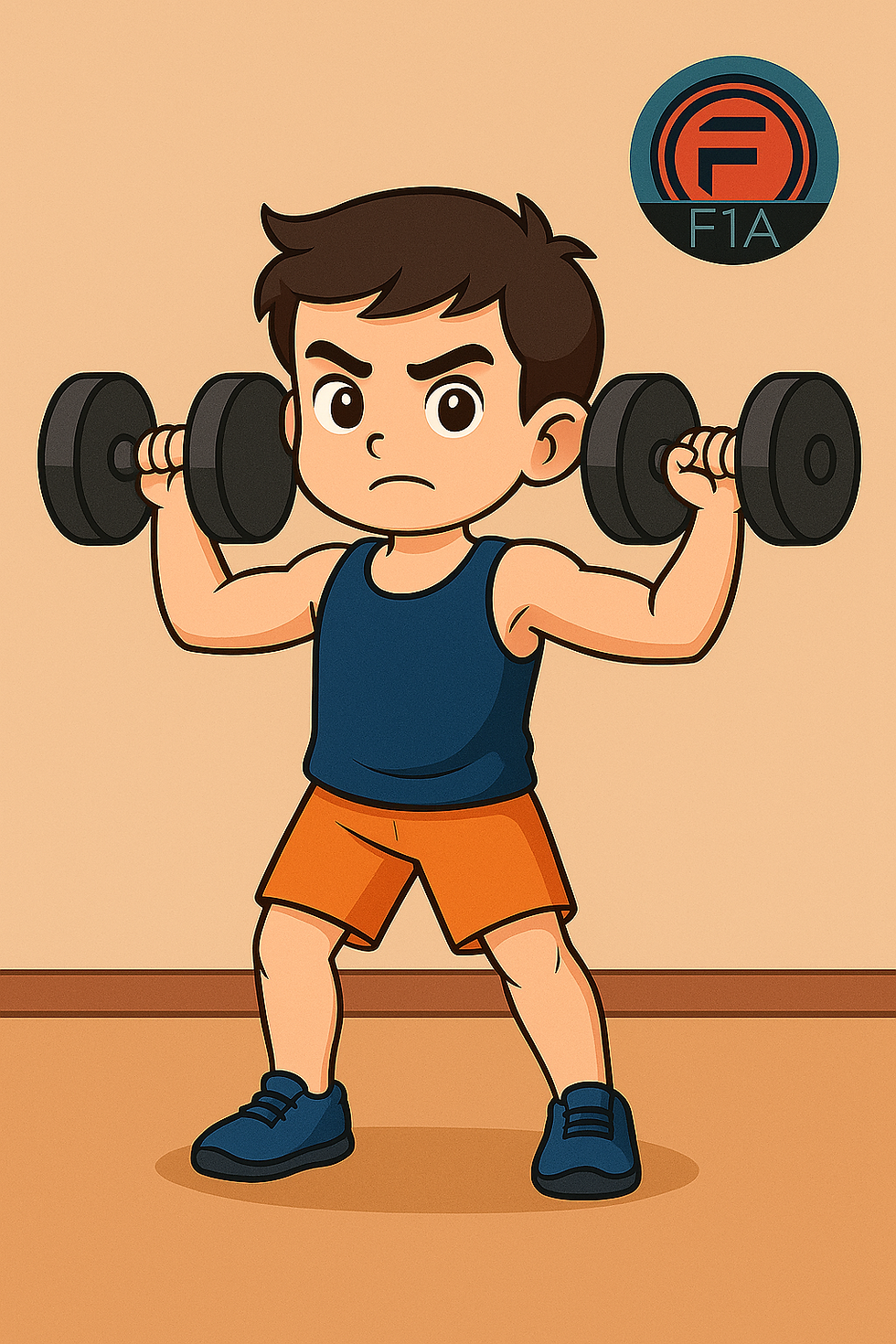Raise a Beast: Why Youth Resistance Training is a Game-Changer for Life
- FitnessFirstAcademy

- Apr 25
- 3 min read

At Fitness First Academy We Engineer Greatness — From the Ground Up.
And it starts early.
Old-school thinking said:
“Wait until high school to train.”
Modern evidence says:
Start young. Start smart. Build champions for life.
The Truth: Strength Training Is Essential for Youth Development
According to the National Academy of Sports Medicine (NASM) and the National Strength and Conditioning Association (NSCA), supervised strength training delivers huge benefits for kids and teens:
Builds real strength, power, and endurance
Improves heart health (lower blood pressure, better cholesterol)
Sharpens balance, coordination, and athleticism
Slashes injury risk by strengthening bones, ligaments, and tendons
Boosts confidence, emotional resilience, and mental health
Instills lifelong fitness habits early
Bottom line:
Kids today aren’t too young to train —
They’re too vulnerable not to.
The Real Threat: Inactivity and Pediatric Dynapenia
Forget overtraining.
The real enemy is muscle underdevelopment.
It’s called pediatric dynapenia —
Muscle weakness in kids caused by inactivity and tech addiction, not aging or disease.
The consequences?
Decreased strength
Poor balance and coordination
Higher body fat
Lower bone density
More injuries — both on the field and in everyday life
Strength training directly fights pediatric dynapenia by:
Restoring functional strength and stability
Reinforcing bones and joints
Sharpening motor control
Laying a metabolic foundation that resists obesity and diabetes for life
If kids don’t build strength early, they pay for it later.
Smashing the Myths About Youth Strength Training
Myth #1: Strength training stunts growth.
Truth: No legit evidence supports this.
Reality: Supervised training boosts bone growth and mineral density.
Myth #2: Kids can’t get strong before puberty.
Truth: Prepubescent kids can make huge strength gains through neural adaptations — even without adding visible muscle size.
Myth #3: Strength training is dangerous for kids.
Truth: When properly coached, it’s safer than sports like football, soccer, or gymnastics.
Risk comes from bad coaching — not the training itself.
How Kids Should Actually Train
Both NASM and NSCA agree: It’s all about smart programming.

Start light, master technique first
Focus on bodyweight, bands, medicine balls, and light free weights
Train 2–3x per week for best results
Emphasize movement skills: squat, lunge, push, pull, rotate, jump, land
Progress based on skill, not ego
Make it fun to keep them hooked
Key:
Training must be supervised by qualified professionals.
Random workouts and heavy, sloppy lifting? That’s where injuries happen — not from proper strength training.
Early Specialization Destroys Potential
Pressure to specialize early is killing athletic careers.
“He needs to focus on one sport for that scholarship!”
Wrong.
Research proves early specialization leads to:
More overuse injuries
Higher burnout rates
Less athletic versatility
The best athletes are built, not rushed.
They train multiple skills across multiple sports —
Building stronger, more adaptable bodies.
At Fitness First Academy: We Build Athletes for Life

Our blueprint:
2–3 structured sessions per week focused on strength, balance, coordination, and speed
Programs tailored to biological, not just chronological, age
Master bodyweight first → then load progressively
Teach the why behind the movement
Build leadership through physical confidence
We don’t just raise athletes.
We raise disciplined, resilient leaders.
Why Start Early? Because Windows Close Fast
Physical and neurological development happens in critical windows:
Ages 6–12: Motor skills like balance, speed, and reaction time
Ages 12–18: Strength, endurance, and power
Pre- and early adolescence: Maximize bone density
Miss these windows?
The body never fully catches up.
Start late, struggle forever.
Start early, dominate for life.
Bottom Line:
Weak kids become weak adults.
Strong kids become unstoppable.
At Fitness First Academy, we don’t play catch-up.
We build dominance from Day One.
Invest early.
Train right.
Raise a legend.
References:
National Academy of Sports Medicine. (2024). Youth Resistance Training for Long-Term Health: An Evidence-Based Review.
Faigenbaum, A. D., et al. (2009). Youth Resistance Training: Updated Position Statement Paper from the National Strength and Conditioning Association. Journal of Strength and Conditioning Research, 23(5 Suppl), S60–S79.
Lloyd, R. S., et al. (2014). Position Statement on Youth Resistance Training: The 2014 International Consensus. British Journal of Sports Medicine, 48(7), 498–505.

About the Author
Alexander Morrow is a NASM Certified Personal Trainer, ACE Certified Personal Trainer, ACE Certified Group Fitness Instructor, NCSF Certified Strength & Conditioning Coach & ACE Fitness Nutrition Specialist with a passion for helping people reach their fitness goals. With a focus on strength training and functional movement, he believe in building a strong, capable body from the inside out. Connect with @FitnessFirstAcademyF1A on Instagram or visit www.FitnessFirstAcademy.com/blog for more training tips and inspiration.
Get Ready to Feel Strong and Powerful!



Comments